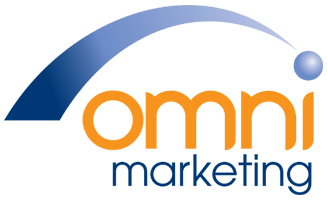Understanding the Local Market Dynamics

Table of Contents
- Understanding the Local Market Dynamics
- The Silent Power of Marketing Automation
- Common Pitfalls in Dental Marketing
- Dissecting Competitors’ Winning Strategies
- Myths About Dental Practice Growth
- Predicting the Future of Dental Marketing
- Data-Driven Client Acquisition Tactics
- The ROI of Implementing New Technologies
Introduction
Small business owners in Swansea, do you find your dental practice lagging behind in the fiercely competitive market? In this comprehensive guide, we unveil why 78% of dental patients are flocking to your competitors while showing you how to leverage marketing automation to reclaim your market share. With insights, strategies, and actionable tips, you can convert potential losses into newfound growth. Let’s dive into the essentials of boosting your business with intelligent marketing strategies.
Understanding the Local Market Dynamics
Marketing automation has emerged as a vital tool for dental practices, significantly enhancing patient engagement and operational efficiency. By streamlining repetitive tasks, dental practices can redirect their focus towards delivering high-quality patient care and expanding their client base.
Enhanced Patient Engagement
Effective marketing automation supports the development of stronger relationships between dental practitioners and their patients through:
- Automated Email Campaigns: These campaigns manage everything from appointment reminders to follow-up messages and educational content. This consistent communication fosters higher patient satisfaction and retention rates.
- Social Media Automation: Scheduling posts in advance ensures a steady stream of content on platforms where patients are active, while automated responses to customer inquiries build trust and enhance visibility.
- Targeted Outreach: Employing retargeting campaigns and creating personalised landing pages, practices can engage prospective patients with relevant offers that resonate with their specific needs.
Operational Efficiency Gains
Marketing automation is essential for reducing costs and improving operational workflow:
- Reduced Overhead Costs: Many practices have reported a reduction in their marketing expenses of up to 12.2% by centralising their marketing efforts on a streamlined platform.
- Time Savings: Automating routine tasks, such as sending birthday wishes or reminder messages, frees up valuable time for staff to concentrate on patient interactions and care.
- Data-Driven Decisions: With robust analytics tools integrated within automated systems, practices can monitor campaign performance, adapt strategies, and continually improve engagement efforts.
Key Automation Strategies
Implementing specific tactics can further enhance the effectiveness of marketing automation:
- Email Workflows: Use workflows to trigger reminders and lifecycle updates that keep patients informed and engaged.
- Social Media Scheduling: Set up a consistent posting schedule to maintain an active online presence, answering inquiries in real-time through automated replies.
- Lead Generation Tools: Utilize forms, landing pages, and targeted ads that capture prospective patients’ information and nurture their interest.
Adopting these marketing automation strategies enables dental practices in Swansea to enhance patient engagement while boosting operational efficiency, ultimately leading to a more successful practice.
The Silent Power of Marketing Automation
In the competitive landscape of dental practices, missteps in marketing can significantly hamper patient acquisition and retention. Local dental practices often fall prey to common mistakes that undermine their efforts. Here’s a thorough breakdown of these pitfalls along with actionable strategies to overcome them.
1. Strategic Oversights
Mistake: Lack of Creative Strategy
Many practices operate without a structured marketing plan, relying on generic approaches that yield minimal engagement.
Solution: Develop a tailored marketing strategy that leverages patient data and AI tools. Consider implementing personalised campaigns, such as retargeting ads through platforms like Meta Pixel to reach high-intent patients effectively.
Mistake: Failure to Track Metrics
Neglecting analytics can prevent optimisation of campaigns, leading to inefficiencies and wasted resources.
Solution: Use analytics tools to track campaign performance and patient sources. Choose marketing partners who provide clear metrics and demonstrate return on investment.
Mistake: Choosing Partners Based on Price
Focusing solely on cost-effective partnerships often results in misguided strategies lacking depth.
Solution: Evaluate marketing partners based on their expertise and how well they align with your practice’s goals. Look for proven results and customised solutions.
2. Digital Presence Gaps
Mistake: Neglecting Local SEO
Ignoring local keywords and unoptimised Google Business Profiles reduces visibility, limiting patient reach.
Solution: Incorporate local keywords throughout your website, maintain an accurate Google Business Profile, and ensure your site is mobile-friendly and fast-loading.
Mistake: No Active Blog or Content
A static website misses out on essential SEO benefits and patient engagement opportunities.
Solution: Regularly publish blog content that addresses common patient questions, dental care tips, and service highlights to enhance your search engine ranking and build patient trust.
Mistake: Poor Mobile Optimisation
Slow or non-responsive mobile websites can deter potential patients, especially those seeking services on-the-go.
Solution: Conduct regular mobile performance audits and ensure your website provides a smooth, efficient browsing experience across all devices.
3. Audience Misalignment
Mistake: Targeting the Wrong Audience
Practices often fail to define their ideal patient profiles, leading to ineffective marketing campaigns.
Solution: Identify and define your target demographics, such as families or cosmetic dentistry patients, and tailor your messaging to meet these audiences’ specific needs.
Mistake: Impersonal Marketing
Generic marketing approaches fail to resonate with potential patients.
Solution: Use data-driven personalised ads to connect with patients meaningfully, utilising AI tools for better engagement.
4. Reputation Management
Mistake: Ignoring Online Reviews
Many practices overlook the impact of reviews on their reputation and patient trust.
Solution: Encourage satisfied patients to leave reviews and actively respond to all feedback, addressing concerns and showing appreciation.
Mistake: Spammy Marketing
Aggressive marketing tactics can alienate potential patients.
Solution: Adopt a more nurturing approach to marketing that focuses on building relationships rather than merely pushing sales.
5. Resource Allocation
Mistake: Reliance on Traditional Methods
Some practices stick mostly to traditional marketing channels, neglecting the benefits of digital platforms.
Solution: Embrace modern digital marketing tactics that include social media engagement and online advertising strategies.
Mistake: Neglecting Referrals
Failing to utilise patient referrals can mean a missed opportunity for growth.
Solution: Create a referral programme that rewards existing patients for bringing in new clients, enhancing both satisfaction and loyalty.
Common Pitfalls in Dental Marketing
Targeted Direct Mail Marketing
Successful dental practices are increasingly leveraging targeted direct mail marketing to engage local communities effectively. A prime example is Teddy Bear Dental Care, which partnered with Triadex Services to implement zip code-specific campaigns. They distributed 5,000 mailers offering a £150 gift card to draw in new patients. This campaign not only attracted a substantial number of responses but also yielded a significant profit increase of over £103,000. Following this success, subsequent campaigns experimented with a two-detachable card template that combined the gift card offer with a free exam and X-rays, strategically focusing on different audience segments within the same geographic areas.
SEO-Driven Organic Growth
Another impactful strategy is enhancing online visibility through search engine optimisation (SEO). For instance, the Michigan Center for TMJ & Sleep Wellness recorded an impressive 758% increase in local traffic and a staggering 1863% boost in conversions by optimising their website. Similar results were reported by Garrett Goodling DDS, which saw a 6,881% traffic increase. These outcomes highlight the critical importance of local SEO, effective keyword targeting, and technical site improvements. Practices focusing on SEO can reach more local patients actively searching for dental services online, increasing their patient base significantly.
Social Media Advertising
Investing in social media platforms also proves beneficial for practices looking to increase engagement and patient acquisition. Campaigns run by Excellence in Dentistry achieved a 74.3% increase in Facebook reach, while Smile Columbia Dentistry noted a remarkable 40% growth in Instagram followers. Key tactics included crafting platform-specific advertisements, optimising bidding strategies, and employing audience retargeting techniques, leading to efficient budget usage and maximised exposure.
Multi-Campaign Iteration
The iterative approach taken by Teddy Bear Dental Care exemplifies strategic marketing in action. Their multi-phase campaign not only involved initial targeted offers but also allowed for adjustments based on audience response, ensuring messages remained relevant and impactful. This strategy effectively bridges consistency with adaptability, ensuring sustained engagement.
Dissecting Competitors’ Winning Strategies
In the realm of dental practice growth, several myths surrounding marketing automation persist, hindering progress for many practices. Addressing these misconceptions is crucial for Swansea dental business owners who seek to leverage technology to enhance patient engagement and practice efficiency.
Myth 1: Automated Email Campaigns Are Ineffective
Contrary to popular belief, automated email sequences, or drip campaigns, play a vital role in retaining patients and ensuring compliance with treatment plans. Research indicates that 59% of consumers are influenced by email marketing, showing its effectiveness in fostering patient relationships and promoting additional services.
Myth 2: Automated Social Media Ads Don’t Generate Leads
Many believe that social media advertising isn’t beneficial for smaller dental practices, yet this is misleading. Targeted paid ads on platforms like Facebook and TikTok can significantly enhance visibility. Facebook alone reaches about 76% of adults, making it an effective tool for attracting new patients.
Myth 3: Automated SEO Tools Are Obsolete
There is a growing misconception that automation in SEO is no longer relevant; in reality, it is evolving. AI is enhancing SEO strategies, making it indispensable for local optimisation and increasing search visibility.
Myth 4: AI Automation Can’t Be Trusted in Dentistry
Concerns about the reliability of AI in dentistry are common, yet companies are setting the standard for trustworthy AI tools. These advancements improve diagnostic accuracy and patient care, breaking down the barriers of scepticism surrounding technology.
Myth 5: Marketing Automation Requires a Big Budget
Another prevalent myth is that effective marketing automation demands a significant financial investment. However, even small practices can see efficient results with modest budgets, particularly when focusing on local SEO and tailored content strategies.
Myth 6: Automated Tools Lack Personalisation
Some fear that automation diminishes the personal touch in marketing. On the contrary, automated communications can be personalised, allowing practices to maintain meaningful relationships with patients while efficiently managing their outreach.
Myth 7: Marketing Automation is Too Complex to Implement
Lastly, the belief that marketing automation tools are overly complex discourages practices from adopting them. In fact, many integrated solutions simplify the management of marketing activities, facilitating the measurement of ROI and enhancing overall effectiveness.
Myths About Dental Practice Growth
Emerging trends in dental marketing for 2024–2025 focus on integration of digital tools, personalised patient experiences, and omnipresent branding. Below are key developments shaping the industry:
Omnipresent Marketing
Practices are prioritising consistent visibility across all patient touchpoints—social media, websites, search engines, email campaigns, and in-office experiences. This approach ensures seamless brand recognition and builds trust through uniform messaging.
- Unified branding across platforms (e.g., matching website visuals with social media).
- Geo-targeted ads to capture local leads through localised SEO.
- Direct mail integration to reinforce digital efforts with physical collateral.
Local SEO and Geo-Targeting
With competition intensifying, practices are investing in hyper-local search optimisation to rank higher in local searches. Strategies include:
- Localised content addressing community-specific oral health concerns.
- Google Business Profile optimisation to improve online visibility and patient reviews.
Social Media and Community-Driven Engagement
Dental practices are leveraging story-driven content and patient testimonials to humanise their services:
- User-generated content showcasing patient stories and treatment outcomes.
- Platform-specific strategies: Instagram and TikTok for visual storytelling, Facebook for community-building groups.
Personalised and Remote Care
Patients increasingly demand flexible care models and transparent communication:
- Telehealth integration for remote consultations and follow-ups.
- Cost transparency through clear pricing on websites and social media.
Technology and Sustainability
Practices are adopting eco-friendly practices and data-driven tools to align with evolving patient values:
- Green dentistry (e.g., reducing waste, using recyclable materials).
- AI-powered chatbots for real-time patient inquiries and appointment scheduling.
Online Reputation Management
As online reviews influence patient choices, practices are:
- Actively soliciting testimonials and leveraging them across marketing channels.
- Proactively addressing feedback to showcase responsiveness and improve patient satisfaction.
By 2025, successful practices will likely combine omnipresent branding, local SEO, and patient-centric technology to stand out in a crowded market.
Predicting the Future of Dental Marketing
Data-Driven Client Acquisition Tactics for Dental Practices
In an increasingly competitive dental market like Swansea, utilising data-driven client acquisition tactics can be pivotal for growth. Employing analytics allows practices to identify and attract potential clients effectively. Here are several strategies that dental businesses can adopt to enhance their market presence.
Brand Development and Strategy
- Define a Strong Brand Identity: Establishing a clear and distinct brand identity is vital. For instance, consider positioning your practice as “family-friendly” or “specialised in cosmetic dentistry” to set yourself apart from competitors. Consistent messaging across various platforms strengthens this identity, making it easier for potential clients to recognise your practice.
- Set Measurable Benchmarks: It is essential to track key performance indicators such as patient acquisition rates and conversion percentages. Analysing these metrics provides insights that can refine your marketing campaigns.
Digital Optimisation
- Local SEO and Website Quality: Optimising your website for local SEO is crucial. Target specific keywords like “Swansea dental practice” and ensure your site is mobile-friendly to attract potential patients. Additionally, having a vibrant content strategy—comprising blog posts, patient testimonials, and educational materials—can boost search rankings.
- Analytics-Driven Updates: Utilising tools like Google Analytics helps track traffic sources and patient journeys. Conduct A/B testing on various elements of your website to enhance user experience significantly.
Targeted Patient Segmentation
- Leverage NHS and Student Demographics: Promote offerings like free dental exams for those under 25, along with streamlined NHS registration processes to attract Swansea’s student population. For those over 25, highlight private care plans to cater to a different market segment.
Partnerships and Retention
- Collaborate with Local Marketing Agencies: Form partnerships with local dental marketing firms to create targeted campaigns. Specialised agencies can run hyper-local advertising to reach nearby residents effectively.
- Implement Patient Retention Programmes: Develop loyalty programmes, such as referral rewards, and utilise automated appointment reminders to minimise no-shows and encourage repeat visits.
Implementing these data-driven strategies will help Swansea dental practices not only attract new clients but also maintain a loyal customer base, enhancing overall growth through marketing automation.
Data-Driven Client Acquisition Tactics
Understanding ROI: Traditional Marketing vs. Marketing Automation
In the competitive landscape of dental marketing, distinguishing between traditional marketing techniques and modern marketing automation is crucial for understanding the potential return on investment (ROI). Traditional marketing methods, including television ads, billboards, and print media, typically adopt a mass-market approach. This often results in higher costs while lacking the precision to target specific audiences effectively. As a result, the ROI from these channels tends to be lower due to diminished conversion rates and higher spending on outreach that does not guarantee new patients.
Conversely, marketing automation encompasses strategies such as email campaigns, social media advertising, and SEO—all of which benefit from precise targeting. This approach allows dental practices to segment their audience based on demographics, location, and online behaviour, significantly enhancing engagement rates and cost efficiency. Automated marketing tools can track how potential patients interact with campaigns, enabling businesses to make swift adjustments for optimum effectiveness.
Research indicates that dental practices employing sophisticated marketing automation can achieve an ROI of 300-500% or more, reflecting the effectiveness of long-term patient retention strategies over time (like loyalty programmes and follow-up care). This is in stark contrast to traditional marketing methods, which often yield a fraction of these returns due to their untargeted nature.
In addition to boosting ROI, marketing automation facilitates real-time analytics. Situations can be rapidly assessed through tools, allowing dental practices to adapt their strategies promptly. If monitoring indicates a particular email campaign is underperforming, businesses can tweak content or targeting instantly to improve outcomes.
With approximately 80% of consumers conducting research online before making healthcare decisions, it’s clear that a shift towards marketing automation is essential. Embracing these technologies not only streamlines operations but offers a sustainable competitive edge in attracting and retaining patients.
The ROI of Implementing New Technologies
Effective marketing automation strategies for dental practices in Swansea, UK, focus on lead generation, CRM optimisation, and multi-channel patient engagement. Here’s how leading providers structure their solutions:
CRM & AI-Powered Lead Nurturing
Dominate Dental emphasizes AI-driven tools to streamline lead management, reactivating past patients and nurturing new leads through automated email, SMS, WhatsApp, and live chat campaigns. This approach ensures that practices maintain contact with both prospective and former patients, thus enhancing retention and conversion rates.
Link Digital complements this with CRM systems that handle patient databases efficiently, reducing manual follow-ups and ensuring consistent communication. By leveraging automation, dental practices can focus more on patient care while automating routine communications, which are crucial in maintaining relationships.
Multi-Channel Automation
- Social media ads: Platforms like Facebook and Instagram deliver targeted campaigns to engage potential patients, creating awareness for services like Invisalign or implants. These campaigns can be precisely tailored to reach specific demographics within the Swansea area.
- PPC campaigns: Google and Bing Ads generate quick results by connecting practices with high-intent patients in competitive local markets. By using localised, targeted keywords, practices can effectively attract nearby clients.
- Pay-per-lead services: Fixed-cost models for guaranteed leads (e.g., implants, emergency appointments) ensure measurable ROI without upfront fees, making it easier for dental practitioners to manage budgets and expectations.
Digital Marketing Essentials
SEO optimisation, targeting keywords like “dental implants” or “Invisalign,” improves visibility in Swansea’s competitive market. A well-optimised website drives organic traffic, giving practices a competitive edge.
Website design emphasizes user experience, reducing patient intimidation while showcasing the practice’s professionalism. A user-friendly website is key to converting visitors into bookings, especially for first-time patients.
Local Relevance
While Cambria Dental in Swansea focuses on clinical services, Consultant Connect (used in Swansea Bay) demonstrates regional adoption of tech tools, though it’s geared toward clinical advice rather than marketing. For automation-specific solutions, UK-wide providers like Dominate Dental and Link Digital tailor strategies for Swansea practices, leveraging competitive intelligence and local market trends.
Sources
- Dental CPA – Marketing Automation for Dental Practices
- XLDent – 6 Ways to Acquire and Retain More Patients with Marketing Automation
- Everything DSO – Use Marketing Automation to Grow Your Dental Practice
- Docs Education – 5 Dental Marketing Mistakes That Will Hurt Your Practice
- Dr Marketing – Common Marketing Mistakes in 2025 and How to Avoid Them
- The Creative Composite – Top Dental Marketing Mistakes
- Pro Impressions Group – Dental Marketing Case Studies
- Triadex Services – Dental Marketing Campaign Success
- Affordable Marketing Solutions: The Swansea Small Business Growth Plan Under £500/Month – 15 May 2025
- AI in Accounting Marketing: Leveraging Technology for Client Acquisition – 15 May 2025
- The Essential Legal Content Management System: Organize Your Thought Leadership for Maximum Impact – 14 May 2025






